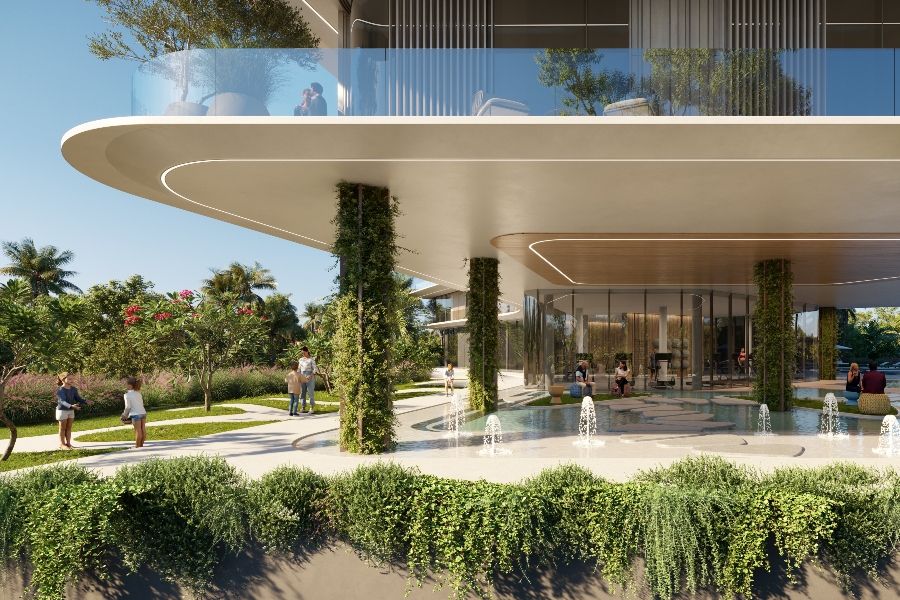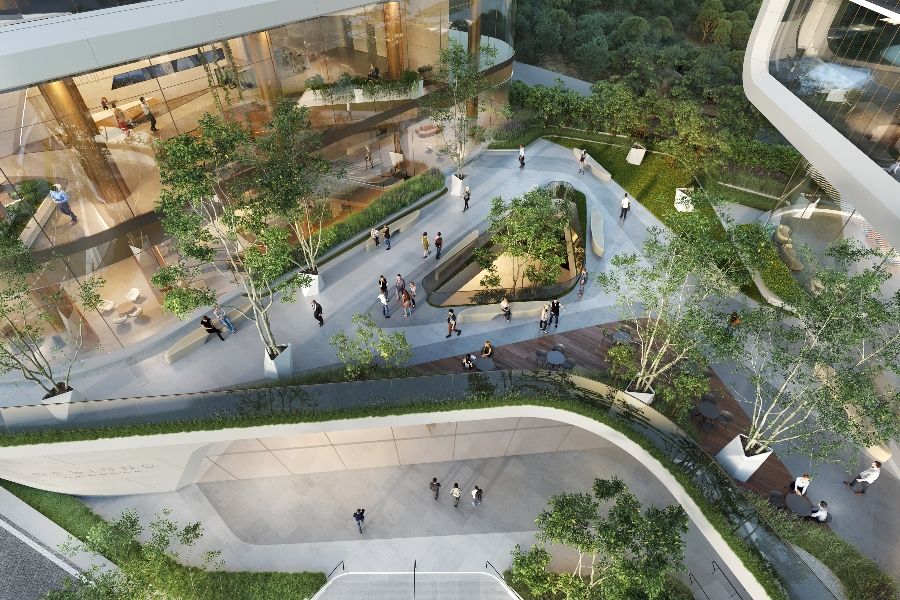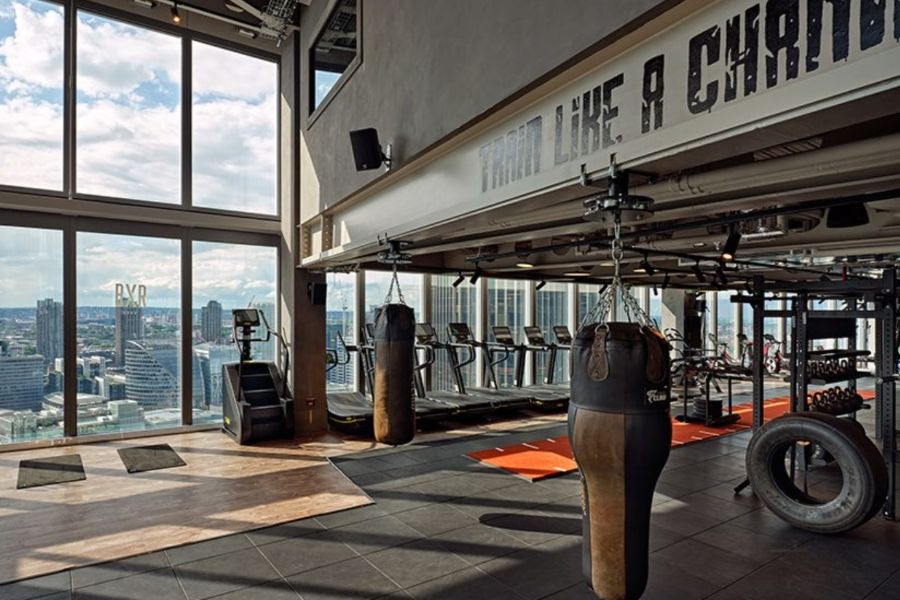As part of the Global Wellness Summit’s 10 Wellness Trends of 2022, wellness experts mentioned the concept of wellness tourism and how, ever since the pandemic, what constitutes a regenerative escape has changed in the eyes of travelers. The great resignation, record setting retirements and a rise in global nomadism due to remote work are indicative of the sheer commitment people have to discovering themselves.
“There was a boom that was created after the lockdowns,” says Samuele Sordi, Chief Architect of Pininfarina. “Travelers wanted to get out of the interiors they had been cooped up in for so long, and so the role of the hotel changed in their eyes. In a couple years, we might reach an in-between, but for now, especially for the younger generation, the hotel has become more of a basecamp for exploration.”
Intention-based travel, as it is known, is an opportunity for growth and development as much as it is self-reflection and relaxation. It’s an opportunity to disconnect from the world and its worries at large, but, as the name implies, there is some greater goal at its heart, whether it’s an opportunity to reconnect with nature, develop a new skill, obtain resilience or perhaps forge new connections within a community.
By prioritizing these individual experiences, designers and architects can create optimized spaces that cater to these ideas of wellness, sustainability and community, says Sordi. “It’s about approaching elevated wellness from a user-centric perspective. You try to create memorable experiences in every pocket of space. It’s like studying everything from an ergonomics perspective. Everything should be tailored for who is going to be in that space.
A Reconnection with the Outdoors Brings People Back to Themselves
“This trend that has blended the boundaries between indoor and outdoor can be expected to last for years to come,” Sordi states. “Contact with nature is key, it’s why glamping has become so popular within the hospitality industry, but I think one of the major challenges will be finding ways to enhance that connection. Technology right now might be seen as dichotomous to nature, but I think when done correctly they have incredible potential to merge and complement one another.”
The simplest gesture, he says, can come from an inclusion of plants, but it shouldn’t stop there. According to Sordi, this reconnection should be about design and spaces that are fully inspired by nature, and it should focus on replicating what nature provides for human beings: the energy that’s still found in calm, quiet places. There are places in nature that have no vegetation yet still evoke a beneficial response, like for instance, caves.

(Light Towers, Pininfarina)
Sordi recalls one installation in particular that represented a biophilic cave space, though, it was more a manipulation of the space to evoke that cave experience, as he describes it. Here technology allowed the designers to create computational patterns from nature, developing formations and simulated organic columns that all have their origins in the natural world. The design of space reminded people of nature’s shapes, and, of course, the sounds brought people into the meditative space beneath the earth.
“This appreciation of a natural connection is also leading to builds that are regenerative not just for guests, but for the environment as well. I think that really feeds into that greater sense of wellness. This story of regeneration that’s taking place in guests is playing out in the landscapes and buildings and that has the power to be very transformational.”
Community and Culture as a Regenerative Engine
“Community has become a major topic in the hospitality industry, not just for us as architects and designers, but for travelers as well, especially younger travelers,” says Sordi. “It’s another opportunity to learn and grow for travelers by connecting with a new culture, tradition, arts and people. On our side, though, we have to be looking at the social impact of the project. How can this benefit the local community as well as the traveler?
“In a lot of projects, I see local craftsmen getting brought on to the build process very early on, and I think that’s very important for any project dealing with community. If we design anything that pulls from a local culture but cut the community out from it’s wrong, and that’s especially true for the work we do in hospitality.”

(Casa Hormiga, TallerMid51)
Art can hold an important place in wellness, and what better way to draw in culture and engage the local community than through art? Though, it doesn’t have to stop at art. Tables, chairs, tapestries and other pieces of furniture and design presents an opportunity to engage the local community on a project. Even entire design practices can be borrowed from local cultures, introducing new technologies into old ways to create something truly unique.
Local traditions and ways of building are often better for the environment as well, and offer a unique level of comfort distinct to the region. The more a hotel, or really any structure, leans into these traditions, the better it can be for the local ecology and the more connected guests and visitors can feel with the local communities and culture.
Get Creative with the Placement and Types of Amenities
There has been a gradual movement in making specific amenities, once closed off to only hotel guests now open to the general public as well. Respite spaces that are inherently social provide an inclusive moment of rest, while also promoting socialization and opening yet another opportunity to connect with member of the local community.
“Everything should be porous, open and connected to the outdoors and the people,” Sordi says when designing these types of spaces. “It’s something to achieve in every project, even in office buildings. It builds upon the two driving forces of the outdoors and community, and, it highlights the value of transparency, which I think is something that all brands are striving for now.”

(Torre Designo, Pininfarina)
Opening a rest area to the public also opens it to the outdoors, adding natural light and views to the interior. Areas that are seen as being more activity focused can also open up. Sordi even suggests allowing some private amenities to open up during the evening to welcome in the community, such as a juice bar or restaurant, or perhaps even a music venue.
The focus should be trying to create as many memorable experiences for the people as possible in each pocket of space.






